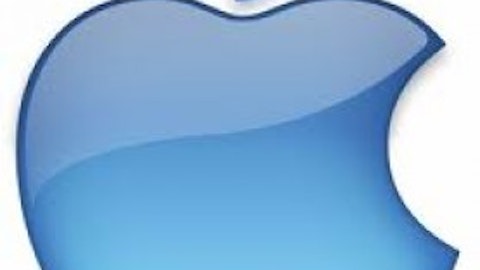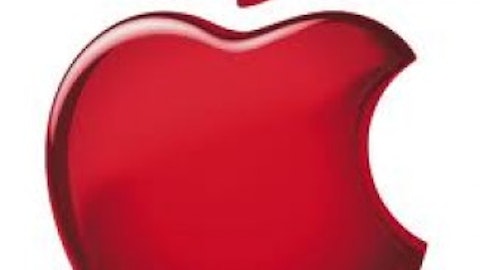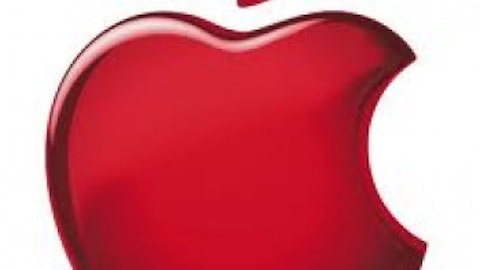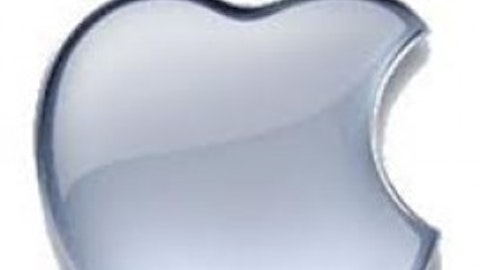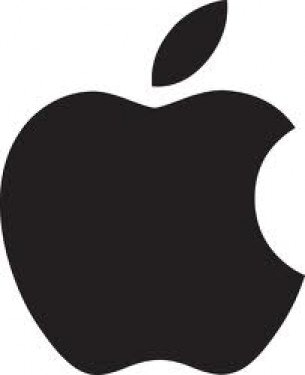
Disappointing results
It’s been a tough year for smartphone manufacturers.
Last week Samsung’s preliminary financial results failed to meet the street’s expectations due to weaker than expected smartphone sales. The stock is down 17% year-to-date.
I’m not breaking any news here but Apple Inc. (NASDAQ:AAPL) has had a difficult year as well. In April the company reported its first year-over-year quarterly earnings decline in a decade. iPhone sales growth is slowing and customers are increasingly choosing older devices with lower markups. Apple Inc. (NASDAQ:AAPL) is down 21% year-to-date.
And Research In Motion Ltd (NASDAQ:BBRY)…well it’s been a rough ride for shareholders. During the first quarter the company sold only 2.7 million BB10 devices, which was significantly less than what the street was looking for.
Just what the heck is going on?
Investors are just learning that the potential size of the smartphone market is going to be smaller than originally estimated. This is happening for two reasons.
First – lack of innovation. In the past ten years we saw email, internet browsing, high-quality cameras, and applications added to handset devices. Eventually there’s only so many innovations you can cram into a device before you run out of reasons to upgrade with the next product cycle.
Apple Inc. (NASDAQ:AAPL)’s iOS7 is a case in point. In June, the company released the latest iteration of its mobile operating system. While we saw a newly designed user interface and some improvements to existing applications, there weren’t really any groundbreaking features that made me want to upgrade my phone immediately.
As the hardware between manufacturers becomes increasingly similar, the premium Apple Inc. (NASDAQ:AAPL) and other high-end players can charge for their products is going to decline.
Second – the market is saturated. According to COMSCORE, Inc. (NASDAQ:SCOR), 58% of U.S. handset owners already own a smartphone. Try to picture the remaining 42% of buyers, the next person who may buy a smart device. These customers are late adopters who are generally older and less techno savvy.
Now I mean no offense to any of my non-smartphone owning readers. But let’s be honest – a flatter handset, bigger screen, or new user interface probably won’t convince you to shell out $750 for a new phone (plus $50 or more per month for a data plan). They will probably need to cut the price significantly to get you to upgrade.
The situation is even worse in emerging markets. Globally, 51% of handsets are now a smartphone. The next buyer probably doesn’t have the financial means to buy such a gizmo.
How do you attract these latecomers? You cut prices.
In so many ways the smartphone business resembles the PC industry ten years ago. As the market became saturated and innovation slowed, the product became a commodity. The winner was determined by who could do the job the cheapest. Industry leaders like Dell quickly lost ground to foreign importers like Lenovo and Acer.
Dell survived but its profits were decimated.
So who’s best positioned going forward?
During the second phase of the technology product cycle, the industry consolidates around a few big players and greater emphasis is put on price rather than innovation.
Google Inc (NASDAQ:GOOG) is well positioned for this shift. Because the company licenses out its operating system to manufacturers, Android handsets have a significant price advantage in the marketplace. They’re attractive to the late adopters. Also, Android is a loss leader for Google Inc (NASDAQ:GOOG). Mobile has always been a way to funnel traffic to the company’s search engine where the real money is. Falling hardware profitability won’t really impact Google Inc (NASDAQ:GOOG)’s financial results.
Apple Inc. (NASDAQ:AAPL) is in a slightly tougher spot. iPhone sales represented 52% of the company’s revenue during the second quarter so slowing sales and declining margins in this segment will have an outsized impact on the company. Now some of those iPhone sales will translate into iPod, iTunes, and app revenue. But it’s hard to see the company’s ecosystem replace all of those smartphone profits unless Apple Inc. (NASDAQ:AAPL) can come up with an entirely new product category (cough, cough, iTV).
For second-tier players like Research In Motion Ltd (NASDAQ:BBRY), Nokia Corporation (ADR) (NYSE:NOK) or other manufacturers, the future looks much worse. Without a well developed product ecosystem behind their handsets, these companies resemble pure-plays in what will become a challenging hardware business.
Rather the next big winner in this space will be a player than can significantly undercut its competitors. I’m talking about Mozilla. The firm’s Firefox OS is much more likely to crave out 10% of the smartphone market than any of the other second-tier players.
Foolish bottom line
Just to be absolutely clear – I’m not predicting the peak in smartphone sales or profits. I’m saying we’re entering the second phase of the product’s expansion which is typically marked by rapidly slowing growth and razor-thin margins. The smartphone is becoming a mature segment and that’s typically a bad thing for technology investors.
The article The End of the Smartphone Boom originally appeared on Fool.com and is written by Robert Baillieul.
Robert Baillieul has no position in any stocks mentioned. The Motley Fool recommends Apple and Google. The Motley Fool owns shares of Apple Inc. (NASDAQ:AAPL) and Google Inc (NASDAQ:GOOG). Robert is a member of The Motley Fool Blog Network — entries represent the personal opinion of the blogger and are not formally edited.
Copyright © 1995 – 2013 The Motley Fool, LLC. All rights reserved. The Motley Fool has a disclosure policy.
